Hello, readers of the Fandomentals. Today I will introduce you to yet another game series that made an impact on me when I was growing up. This time it’s “Age of Wonders,” a turn-based fantasy strategy game.
The series begins with the first game, titled simply Age of Wonders. My younger, more excitable self found it as a demo version in a gaming magazine and fell in love. I’m not sure what about it spoke to me the way other games didn’t. Many years later I could finally play the full version.
Age of Wonders
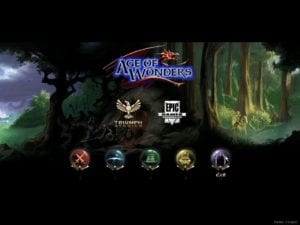
What is Age of Wonders? It was, at its core, a fantasy wargame between twelve races. There are four good races, four evil races and four neutral races. Now, my opinion about assigning moral standing to entire races is as low as it gets, but sadly Age of Wonders plays it entirely straight. Good races are good, bad races are bad, neutral races can be both.
The good races are elves, dwarves, halflings, and high men. The neutral ones are humans, frotslings, azracs, and lizardmen. Finally, the evil races are orcs, goblins, dark elves, and undead.
Most of those are self-explanatory, but there’s a few that won’t be immediately obvious. Frostlings are a goblin-like race living in, no surprise, the arctic. Azracs…I wondered who they were when I played the demo. Then I actually found out they’re…desert-dwelling humans with a fantasy-Middle Eastern theme. High men are a race of celestial beings that look like pale humans with a Greco-Roman theme. I can’t help but feel like this has some unpleasant implications.
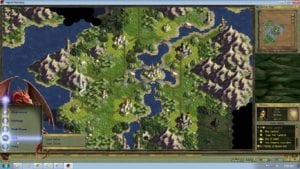
The races’ alignment has impact on both the campaigns and single missions. In the campaign, we take the side of good or evil, starting with command over halflings or goblins regardless of our leader’s race. Then we move on to other races and the story branches depending on that. In a single mission, alignment dictates your diplomacy.
If your starting or dominant race is evil, you can’t recruit good races and vice versa. Any cities and races of such races you own will be perpetually unhappy and rebellious. Neutral races can get along with both good and evil ones, which gives them an advantage. The exceptions are high men and undead, who are respectively pure good and pure evil. They can’t ally with neutral races. There’s an exception to this exception though, in that high men can ally with humans.
What this means is that regardless of your starting race, you’re likely to end up leading several, and so mixing and matching units from different races is important. But what do races give us?
Every race has a set of twelve units, many of which are shared. How many of them you can recruit depends on the cities you own – you need to upgrade the cities and install the units first. And the maximum level of units depends on the size of the city.
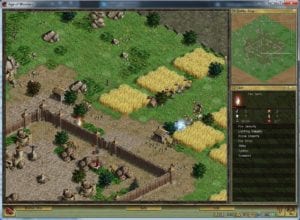
The first two tiers contain the basic infantry, archers, battering rams, special units, cavalry, priests, catapults and ballistae. The siege engines are largely the same between all races, though there’s exceptions – Azracs use elephants instead of battering rams, for one thing, and orcs have stronger ballistae. Lizardmen mount their ballistae and catapults on giant turtles – which is relevant because it lets them swim like most of their units.
The third tier is where things get interesting. Here the races differ much more and the units on this roster, three for each race, become a mélange of fantastic creatures and monsters. Trolls, giant bats, eagle riders, balloons, giants, djinns, ice witches…
There’s only one fourth tier unit for every race, usually some monster that’s associated with it, though not always. Humans have air galleys, for instance, that can let them ferry troops across the map. Dwarves have “firstborns”, who are powerful infantry. But orcs have red dragons and lizardmen have basilisks.
This is, I suppose, where the true charm of this game lies. It’s just one big fantasy free-for-all. You can have human air galleys carrying human cavaliers and orc warlords to open a can of hurt on your enemy. It’s not, I should say, balanced very well. Races differ in power and some units are much more powerful than their peers. And yet, it’s fun.
In addition to all that we have our leader. We can accept a default one or build them ourselves. This means selecting their passive traits, abilities and magic spheres. Those dictate which spells we can research and cast. While we have freedom to build our leaders, it’s best to develop their spellcasting first and foremost, as they can cast spells not only in battle but on the world map. Their skill determines how quickly they cast them, as world map spells will often take several turns.
We can also recruit heroes, who develop similarly to leaders but they’re less reliant on spellcasting. As such, we can turn them into combat-monsters who rip apart enemy units like paper. And unlike our leaders, the game won’t immediately end if they die.
So what is the actual flow of the game? Much like in many strategy games, we have the strategic and tactical map. The former is where we move our armies, capture cities and structures or explore. The resources are simply gold and mana. Armies can contain eight units at most and every unit occupies the same “space”. They’re also all represented by a single miniature.
However, that does not mean battles only involve eight versus eight units at most. More than one army can participate – if two armies clash, any armies in adjacent hexes will join in. This can lead to truly large-scale fights or overwhelming the enemy with numbers.
Age of Wonders 2 and Age of Wonders: Shadow Magic
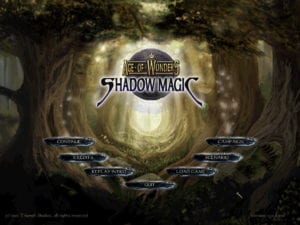
Age of Wonders 2 changes things up a bit. It’s still the same familiar structure, but the game revolves around god-like wizard-kings. The player’s leader is one of them as well. This brings with it a different pace of game. For one thing, our leader dying is no longer game over. When wizards die, they return to their towers next turn. To kill them for good you need to eliminate all their wizard towers first.
Secondly, it introduces the concept of a domain. A wizard can cast spells anywhere within their domain, even if they’re not present. Domains spread around wizard towers, which is amplified if a wizard is actually there. They also project in a small radius from heroes, making them even more valuable.
The increased focus on magic also comes with a more robust research system, where we can research upgrades as well as spells themselves. The economic side of the game is more robust in general. Instead of simply upgrading towns and building walls, we can now construct a variety of buildings that serve different functions. Those include buildings that let us recruit units, rather than installing them directly.
Focusing on god-wizards pushes races themselves a bit in the background. Every race has a wizard associated with it, though they’re not always of that race – orcs and goblins are led by human wizards. The connection isn’t hard and fast, either, and you can always lead a different race.
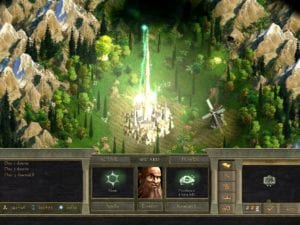
The race roster itself remains largely the same, with two exceptions. Among the neutral races, azracs are replaced by tigrans while lizardmen are replaced by draconians. Tigrans are, predictably enough, a cat-like race following the wizard Yaka, who was the azrac’s god in Age of Wonders 1. Draconians descend from dragons, likewise without surprising anyone. High men became archons, a name that carries less of an unfortunate subtext.
Much like before, there are four tiers of units, but their arrangement is somewhat different. Any city can produce its race’s basic units, often – but not always – using a polearm or being a fast-moving skirmisher.
Constructing the next army building gives you the basic infantry and archer and then there are the special units and the most powerful, fourth-tier one. The units are more varied in general, even before we get into the third tier and the fantastical, monstrous or magical ones.
Despite that, the core of the game remains much the same. Exploration, conquest, diplomacy and resource-gathering go on as they did. The balance is better, but still wobbly. It’s an upgraded and polished version of the original experience, with the addition of the (unfortunate, if you ask me) wizard focus.
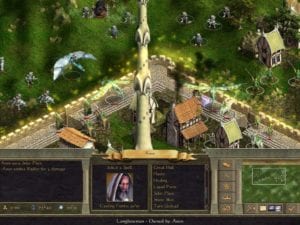
Unlike the first game, the sequel had an expansion, although one that doesn’t need the basic game. Age of Wonders: Shadow magic expands on and changes the basic game. The changes are fairly subtle, shifting various unit traits and values around to balance them. The additions are more substantial.
The expansion focuses on an invasion of shadow demons, magic-eating bug-monsters from another dimension. They’re one of the three new races, predictably enough of evil alignment. The new good race are syrons, pale alien-like beings whose world had been conquered by the demons and who had endured millennia of slavery and being used as food for the larvae. Neutral races are joined by nomads, who resemble the first game’s azracs. The existing races each receive a new third-tier unit, which requires a separate building to recruit.
That was it from the franchise for a while, until finally we heard about…
Age of Wonders 3
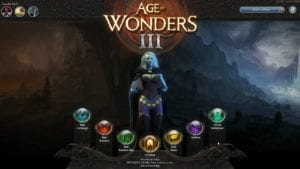
The announcement of the third installment came in 2013 and it was clear the game would be different from the old ones. How different? Let’s find out below.
To start with, the game made the jump into the third dimension. Not terribly surprising, given how much time had passed. This led to a more realistic (insofar as the word applies when dragons come up) size of the battlefield. Lower-level units would also appear as groups, rather than single miniatures. The mechanics of the combat would change in some small and big ways, such as the introduction of flaking and positioning mechanics.
Another big jump would be the abandoning of racial alignment, sending it to oblivion where it belongs. Alignment became more of a question of long-term strategy. Being diplomatic makes you good and waging war makes you evil.
Races themselves would sadly diminish to only four: high elves (as a result of the two old elven factions coming back together), humans, dwarves, draconians, orcs and goblins. The main reason for this was classes.
Age of Wonders 3 takes a different route from the generic leaders of the first game and the wizard-kings of the second one. Instead, leaders come in six classes, which determine their available technologies, spells and units.
Warlords are masters of conventional warfare, focusing on commanding powerful infantry, cavalry and skirmishers. Their spells enhance their units and economy. Their weakness are lack of non-physical damage and reliance on recruitment.
Dreadnaughts represent the advanced technology that appears in the game (though the older ones did already have cannons or airships). Their units are engineers, musketeers and war machines and they can greatly boost their production at the cost of mana. Their weakness is that machines are hard to repair and quite slow.
Theocrats are religious leaders with powerful support and defense capabilities. They have easy access to healing and durable units and can declare their enemies heretics, giving their forces increased damage against them. They don’t have the same offensive capabilities as other classes, however.
Rogues are specialists in subterfuge and deception. They have many ways to boost their economy and cripple the enemy’s. Their units are mobile and versatile, but they lack the brute force and staying power of other classes.
Sorcerers are the closest we get to the old wizard-kings. They command powerful battlefield spells and summoned units. While this gives them an advantage in the early game, they must watch their mana supply and summoning can’t keep up with a full empire’s production capacity.
Arch-Druids are lords of nature, using a mix of summoned beasts and recruited units. They’re a versatile class, recruiting and summoning units alike to create mobile forces. Many of their unit-summoning spells are random and they overall lack the specialization of other classes.
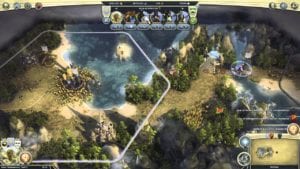
Every class comes with a host of technologies and a full unit roster. Some of them we recruit, others we summon. Those recruited units that aren’t machines or monsters depend on race. For instance, the warlords’ basic unit is berserker – a fast-moving, aggressive shock troop. Depending on whether we produce them in a human, elven or another town, their attributes and abilities will be adjusted for the race in question. Their appearance varies as well, of course.
All of this pushes the races to the background a little bit. For one thing, gone are the weird mish-mash unit rosters. Basic racial units are now only irregulars, infantry, archers, support, pikemen, cavalry and a third-tier special unit. All the monsters and machines are the domain of classes or independent dwellings now.
Many people found it disappointing, but I understood it. The dynamic had changed. Fourth-tier units were the capstone of each class now – with the exception of rogues. Dragons, giants and undead archons (all that remains of the race, for mysterious reasons) could also provide us with them as well, if we could ally with them or conquer them.
All of this made for a much bigger change gameplay experience than between the first two games. The strategic layer also changed, turning more similar to the Civilization games. Leaders have domains, like in Age of Wonders 2, but instead of determining the range of their spells, they control the resources around their cities. And there’s generally more resources, treasure sites and other such things.
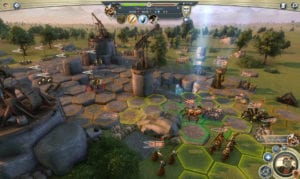
Eventually, that is. Age of Wonders 3 is one of those games that became much better after patches and expansions. The base game was good, but the balance was lacking, the pace of the game allowed for quick access to the top units and simply swarming the enemies with them and the races really weren’t very diverse.
All of it changed with effort from the developers. Balance was tightened and races were made more distinct. In particular, synergies between classes and races appeared. Class units gained more abilities that depended on their race – for instance, rogues’ basic scoundrels dealt poison damage if they were goblins and could throw nets if they were humans.
Patches aside, expansions enriched the game considerably. The first one, Golden Realms, brought back halflings. The jolly folk are a tricky race, whose units are physically fragile but can avoid damage entirely, depending on their morale. It also introduced a host of new features, like new two specializations and many special locations.
The second one, Forgotten Lords, was definitely big. It brought back two races – tigrans and frostlings. Not only that, but it gave us a new class – Necromancer. This class made use of undead creatures, including turning their regular units into ghouls. The expansion also introduced racial happiness and governance (the former being available even without the expansion), giving us more incentive to plan our relations to the races, rather than simply absorbing or conquering them all.
After all this, I really do thing Age of Wonders 3 grew into a challenging, diverse and deep strategic game. The development and patching of the game eventually ceased, although the modding community continues to strive to improve on the balance and diversity. The developers, however, moved on to a new project. Which turned out to be…
Age of Wonders: Planetfall
It’d be perhaps simplistic to call it Age of Wonders in space, but it’s also hard not to say it. The upcoming game, slated to come out this year, isn’t a sequel of the old series, or even taking place in the same setting… but it’s very clearly a spiritual successor.
Planetfall concerns itself with planetary conquests in the wake of a disaster that broke apart a star-spanning union, but the gameplay is quite familiar to Age of Wonders fans. Still expanded upon, of course. Some of the features we’ve seen seem to be answering the complaints people had about Age of Wonders 3. Racial units are more distinct and each race has its own research paths.
I might write more about Planetfall once it comes out, but for now I’ll just leave you with an introduction to this venerable series and a hope for its continuation. I hope I’ve encouraged you.

